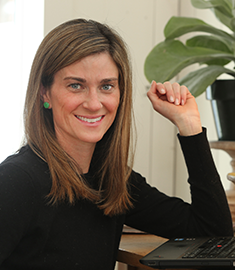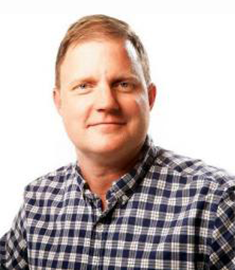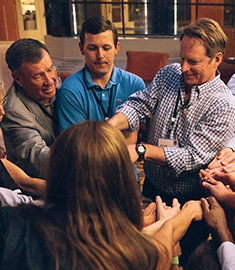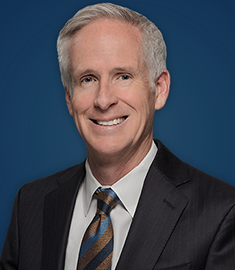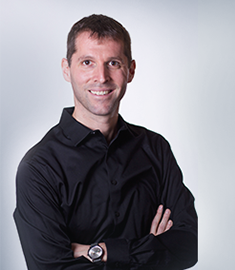What Can Evergreen Companies Learn From Family Businesses About Long-Term Survival?
Being a multi-gen family business is no easy task. The death rate (either through merger, sale or other means) is so high that this may mean that there are no general rules for survival, only exceptions. The principle of Survivorship Bias applies — maybe multi-gen survival in the family business context is a random phenomenon, in which case, this article may not be of much use.
What makes the study of family business interesting is just how highly differentiated the best practices are among successful multi-gen businesses. What works for one family may be anathema to another. Yet, the collective best practices form a mosaic from which we can discern some key strategies and themes. Those are what I wish to share with you today.
Before we start on this journey, you should ask yourself if being perpetual, or multi-gen, is really an appropriate goal at all. What will perpetual existence accomplish? Is this just about you or is there a larger Purpose? Businesses come and go. Fast-growing businesses and large businesses generally have increased risks of failure. Is what you are seeking realistic, sensible, shared?
As this question relates to family businesses, realize that many multi-gen family businesses in existence today were not predestined to become multi-gen. Much depends on timing, luck of the draw and the fit of offsprings with an opportunity, in terms of both age and stage. Necessity also plays a major role, as in a founder becomes ill and the next in line just takes over — that is how families work. I am sure many multi-gen success stories would embrace the statement of “had we known how hard this is, we would never have tried doing it.” Words worth remembering.
Here are the top 10 lessons (inverse order) that family businesses have to offer:
10. Good hygiene (and we don’t mean in the personal sense). This means that all of the equity ownership is controlled by a single person or entity that has a very long life. And make sure that there are no forced sales of equity to liquidate estate tax liabilities or other third-party liabilities, such as a divorce. For family businesses, this is a sine qua non. Fight procrastination.
9. Embrace professional management at all levels. This is particularly hard for family businesses. You must have first-rate human resources processes, and cultural fit is a big issue. You also need rigorous compensation and employee performance evaluation rules. For family businesses, the rules governing family hires need to be spelled out and followed.
8. A liquidity mechanism must exist for nonbelievers. No family can keep all of its members happy all of the time. A way to buy out family members on an acceptable basis (note: I did not say fair basis) is almost always necessary. Likewise, family situations change and a structure that prevents the exercise of free will is doomed to fail. Having an escape mechanism that is available, though never used, may be the key to maintaining solidarity.
7. Strong governance is essential. This is a process, not just an occasion. There must be a board, and it must function. Having independent directors with relevant industry and leadership expertise is very important, although some family businesses survive without this. Good governance that assures the alignment of the interests of stakeholders and managers is essential.
6. You must plan for the predictable life cycles of business and ownership. There will always be ownership and management succession issues — you must plan for them well in advance and have processes in place to address them.
5. Embrace Deans’ Twelve Questions. Is it a good idea not to sell or go public? Know what you are foregoing and why. Do this on an annual basis. Make the stakeholders commit in writing to the plan.
4. In the context of a family business, you must procreate but not too much! You also need the right kind of procreation — preferably passing on the “good” DNA of the founder of the business and little else. For an Evergreen company that is not a family business, this means you must have a way to perpetuate ownership for the future — either sale to management or other employees or donating stock to a nonprofit entity or some combination of these. Someone who shares your vision must always own and control your business — not easy, but examples exist.
3. For family businesses, family harmony is extremely important. For companies aspiring to be Evergreen, you need harmony among all stakeholders — have you identified them? Don’t forget spouses and the families of key constituents … unhappiness is highly contagious.
2. Have a purpose or reason for existence other than longevity itself. Family businesses that survive and thrive have a purpose that motivates all participants to work together for a common goal. More money is not a purpose. Have a mission that motivates the behavior you want. For families, legacy is often a driving force. Stewardship is a key concept.
1. Have a good business. Avoid cyclical industries, avoid leverage. A slow-growing business in a defensible niche may be just the ticket. Profitability needs to be sufficient to enable stakeholders to achieve financial independence outside of the business.
Spencer Burke is the Executive Vice President at The St. Louis Trust Company.
My Father’s Unexpected Gift
Abt Electronics was founded in 1936 by my grandparents. In the midst of the depression, David and Jewel Abt pooled their total savings of $800 to open a small storefront in Chicago’s Logan Square neighborhood.
My father, who passed away last year, started working full time at the family electronics store in 1953 and eventually took over the business. He and my grandparents were both Evergreen before there was a term for it. While the world has changed around us, we’ve stuck to their core values: Treat your employees and your customers like family, and you can grow on your own without needing to look for outside investors. Today, our employee family totals over 1,450.
That doesn’t mean there haven’t been hard times. The consumer electronics landscape has changed dramatically over the past 15 years. Thanks to Amazon and the internet in general, you can order anything you want, from toilet paper to a 60-inch flat-screen television, without leaving your house.
Consumers who venture out are likely to visit a big-box store like Sears or Best Buy if they want electronics.
My father and I had to adjust to these very real competitors over the years, but we did it in a way that always kept our customers and our employees at the center of our universe.
If you’ve been to a big-box store lately, you may have noticed the customer service was, shall we say, lacking. That’s because these stores have become so focused on the returns they are giving their investors that they’ve forgotten about the people who are their front line in any transaction.
We’ve countered that by empowering our salespeople. If someone walks in and shows a lower price, our employees can make the right decision without involving a manager. We give them the space to really help customers because their bonuses aren’t solely based on sales. Showing up on time and going above and beyond to offer our customers great service is reason for a bonus.
For example, on the Saturday before the Super Bowl, we had three separate people come in and buy flat-screen televisions for the game. Instead of the usual next-day delivery, our salespeople delighted the customers by offering same-day delivery to make sure the televisions were set up and working in time for the big game. This was easy to arrange because our salespeople didn’t have to ask a manager or owner before they made the offer. They know if it’s good for the customer, we’ll always back it up.
My father also insisted that we pay our employees more than our competitors pay their people. This helps make them feel that they are part of the Abt family. We’re able to do this because we keep every aspect of our business in-house. People will tell you that outsourcing is cheaper but not when it comes at the expense of quality.
We have our own drivers, servicemen, repairmen, gas station, woodshop and solar panels, and we even have our own backup generator. So, if something goes wrong — and in real life things can go wrong — we have someone right there to fix it or make it right. Our builders can make a custom stand for a television or a panel to help a refrigerator look nice if the space around it is too big.
Not only does this save money and time because we don’t have to track down contractors when something goes wrong, but it also maintains our reputation for excellent service and keeps customers coming back.
The proof is in the numbers and in the multiple awards we have won over the years — the Better Business Bureau’s Award for Market Place Ethics in 2017, Chicago’s Top Workplaces in 2016 and Top Places to Shop in the 2016 Consumer Reports magazine, to name a few. In 2016, our revenues grew 7% while revenues at other electronics companies declined.
Watching my father spend his lifetime putting our family’s core values into practice makes it easier for us to lead our business today. We watched, we learned, and we grew. But, his last action will ensure that we never lose track of who he was and what he taught us.
Soon after my father passed, my brothers and I learned that he had taken out a second life insurance policy we knew nothing about. But this policy wasn’t for us or our families or to handle any tax requirements. Instead, he had taken out the $10 million policy on behalf of our employees who had been with us two years or more. Almost everyone received a check worth $4,000 or $8,000 as a final gift from my father. The outpouring of gratitude and words of kindness for my father and our family left me in tears.
As we continue to grow this third-generation company, the memory of my remarkable father motivates us every day to be better and do better. To the very end, he put People First and trusted good things would happen. We will carry that core value and his wisdom with us forever.
Mike Abt is the Co-President of Abt Electronics.
VIDEO: What Evergreen Entrepreneurs Can Learn From Pixar
This is our first time featuring a third-party video. Occasionally we come across memorable content that we feel embodies the ethos of our members and the Evergreen movement. We’d like to share these ideas with our broader community with the hope that you, too, will find it valuable.
What made Frozen the highest-grossing animated movie of all time? If you ask Ed Catmull, the president of Pixar and Walt Disney Animation Studios, he'll tell you it's all about Pixar's fabled Braintrust, a nonhierarchical group of passionate storytellers who meet every few months to hold a frank discussion of films under development. In this video, Catmull explains what makes the Braintrust so successful, including its members' willingness to talk about any idea without fear of embarrassment, and the fact that it has no actual authority. Creatives who don't feel pressured by their peers are much more likely to embrace their suggestions.
Nurturing An Evergreen Business And An Evergreen Family
Most days, I work in my office in downtown Ketchum, Idaho. It’s quiet and has plenty of room for me to spread out merchandise samples that I’m considering for my Pappy & Company website. But today, my son’s sitter called in sick, so I am handling a few calls from home and tending to his 2-year-old needs.
And I’m not panicking about it. Work-life balance is one of my greatest joys as an Evergreen owner. I work less in the summer months to enjoy vacations with my family, and then I pick up the pace during the school year and the crazy holiday season. As the kids get older and gain their independence, I will put my additional free time into my work.
But Pappy & Co. is not a lifestyle business. It’s something that will keep growing. We’ve doubled our revenue every year since my two sisters and I launched this company three years ago. We’re adding new product lines every month. I am determined to make our merchandise as high-quality, popular and profitable as my family’s famous bourbon.
I’m building a 100-year company just like my ancestors did. Long-term growth is in my blood. My great-grandfather, Julian “Pappy” Van Winkle, started a distillery in 1910 and named one of his pre-prohibition whiskeys Old Rip Van Winkle. Years later, my grandfather took over the company, and sold the distillery and every brand except for one: Old Rip Van Winkle.” Our bourbon has been recognized as one of the most popular in the world.
We didn’t get here through fancy or expensive marketing. We’ve been successful because our Paced Growth meant that customers could discover our bourbon, share it with their friends and become our best ambassadors. Without outside investors, we’ve been able to grow organically and not try to force the business into someone else’s idea of growth.
That is truly the Evergreen spirit — which we’re also embracing at Pappy & Co. We started as a merchandise company for a famous bourbon brand, but our company is really a natural extension of our family. We sell barware that reminds us of our grandfather, maple syrup that our children spoon up at breakfast and hot sauce our husbands are obsessed with. We plan to add a men’s clothing line inspired by Pappy, leather and canvas goods and a female-centric corner to our home items section. Our long-term goal is to extend our lifestyle brand beyond our core bourbon fans.
I am doing all this with a strong appreciation for the Evergreen principle of Paced Growth. Striking a work-life balance is honestly hard work itself sometimes. Every morning, I make sure I have a list of big things that need to get done. But I don’t beat myself up if one item goes unchecked. Since my days are often divided between the job and family, I tend to eat lunch at my desk and work straight through the busiest part of the day. I include my family, even my children, in as much of the business as possible. They see me hauling boxes, they help me sort the samples, and they test out the products.
I’m raising my Evergreen company the same way I’m raising my kids — both with strength and values. Pappy & Co. will be a part of our lives forever and will be a business I hope my children will continue to value and feel proud of. That’s something worth nurturing.
Carrie Van Winkle Greener is the CEO of Pappy & Company.
The Uneasy, Long Road: Why Building An Evergreen Business Takes Perseverance
Deciding to build an Evergreen company was the best decision I ever stumbled into.
When I started Plus3 in 2007, I figured I would need a bunch of investment money to get off the ground. Plus3 adds a charitable twist to the idea of employee wellness, and from what I knew of the health care space (which at the time wasn’t much) it was expensive to get your foot in the door.
But when venture capitalists didn’t seem interested in my idea, I saw it as a great opportunity. By making a go of Plus3 on our own (with seed capital from friends) my partners and I could follow our Purpose and build a company the marketplace didn’t realize it needed.
It hasn’t been easy.
Plus3 is the third company I’ve founded. The first two, RSD3 and GaleForce Sports Marketing, were big enough successes that I didn’t have to worry about my family’s financial security. But I wanted to start one more company before hanging it all up — one filled with emotional currency, not just cash on the bottom-line.
Like many people, Plus3 co-founder Joe Fabris and I were alarmed by the growing trend of obesity. We wanted to find a way to get people off of their couches and taking better care of themselves. Our idea to do that was simple. People want to help other people. So if you tie their wellness goals to employer-sponsored charitable giving (the better they do, the more money that goes to charity) not only will you raise money for worthy causes but you’ll also give people a strong emotional reason to stick to their health goals and feel better about the place they work. By using our platform to tie wellness and giving together, employers could build a healthier, happier and more motivated workforce. (Employers pay a small “per-employee” monthly fee for our service.)
We’d seen the power of this idea when we ran a public trial of the program before we started selling it to big companies. People seemed to love the concept, and we felt confident enough to start working on sales.
But when we spoke with human resource leaders and C-suiters, we hit a roadblock. Although our meetings went great and people said they loved the idea, we couldn’t close a sale.
I’m not going to lie. That felt like shit. But we were pitching an innovative approach to people at these large companies who when it came to HR programs were risk managers, not risk-takers. None of us had health care experience, which made our idea a little scary to them. And at the time, wellness programs were based on individuals improving their clinical health numbers for personal rewards, usually cash bonuses. Get your weight or your blood pressure down to a certain number and you get cash. Our idea — that charitable giving was more motivating than cash — wasn’t intuitive to most of the executives we met. And at the time we had few case studies to defend our employee wellbeing solution
But we Persevered. I am not a quitter, and I knew that no matter what, I was not going to give up on this idea. We were all buoyed by enthusiastic emails we got from individuals who were using the program. Ahnu Shoes was one early adopter. Watching how much their employees and retail customers loved the program helped a lot.
But we often had to find more ways to keep spirits up internally. We had enough money to pay our staff, but salaries were well below what they deserved. My partner Joe and I took no salaries during those years. To show our appreciation to our few employees, whom I dubbed “The Daily Grinders,” we’d do things like give surprise bonuses — say, $1,000 toward a new baby’s college fund — when the team knew we were cash poor.
Then there were the nonfinancial ways I motivated my team. I always encouraged my employees to have side projects, to pursue whatever they wanted as long as their Plus3 job got done and they could jump all in if we needed them to.
Those small things helped get us through the tough times, and in 2012, we finally started to see the light at the end of the tunnel. We pitched our product to Heffernan Insurance Brokers, a Walnut Creek-based company that sells products like ours to bigger companies.
Not only did they agree to partner with us to sell Plus3 but they also signed on to use the system. It was that one in 10 meeting where someone deeply embraces your vision and has the courage to get behind you.
I knew that if these guys got it and wanted to use it, others would too. Two years later my feelings were validated when the global technology company Cobham signed on. At the time, only 5 percent of their 4,000-person workforce was using their very traditional wellness program that linked wellness success to clinical improvements and cash rewards. They signed a two-year agreement with us and the results have been amazing. Almost half of their business units are at 40 percent participation. That means we’re helping a lot of people in that company get healthy and raising a lot of money for charity.
We’re starting to feel the growth really take off. Last year our revenues doubled, and every single one of our clients renewed their contracts with us.
On my computer, I have a little window in the corner that shows how much money our platform has raised for charity. Every time someone goes for a walk, drinks enough water or eats five fruits and vegetables in a day, that number ticks up. So far, we’ve raised over $2.5 million, which is going to great causes like the International Red Cross, Wounded Warriors and Alzheimer’s research. If we had taken venture capital money when we first started, I doubt those investors would have had the patience to allow our vision to come to life. It’s likely that they would have pushed us to “pivot” or sell to get them back some of their investment. As my team and I watch the charitable number tick up, I’m grateful we found the Evergreen path for our clients and their employees, our charities and us — The Daily Grinders.
Rick Sutton is the co-founder and CEO of Plus3.
Picture Perfect: Being Evergreen Means Having the Power to Help
One of the things I value most about being an Evergreen CEO is that I can make decisions that I think are right for my company — without having to check with a fleet of investors. Being Evergreen gives us the independence that helped us make one of the best, if not the most profitable, decisions we’ve ever made.
Here at SmugMug, photos are our passion. We were first a family of photographers; now we are a family business that cares for billions of other families’ photos.
So when I heard through the grapevine last year that online photo storage service Picturelife had suddenly shut down, I wanted to help. More than 220 million photos and videos were completely lost to customers when Picturelife went under.
Picturelife CEO Jonathan Benassaya agreed to let us help, after he’d convinced his own investors and creditors this was the right thing to do. For more than two months last summer, my employees and I worked with technicians to recover the lost photos. We gave every Picturelife patron a free SmugMug account for 30 days, no credit card required. That gave them time to download every one of their photos using SmugMug tools and then choose to remain with us or move on with their memories. Tens of thousands of people took advantage of this offer.
The only reason we were able to do that was because we are Evergreen.
If I had even suggested such a proposal to a board or to investors who valued financial returns above all else, the deal would have never seen the light of day. Having run the numbers ahead of time, it was clear that SmugMug would lose money in this process. It took a lot of human effort, bandwidth, servers and storage costs to move these photos somewhere safe so people could get them back.
But many of our 135 employees agreed to work overtime — nights and weekends if necessary — as volunteers on this project. For them, it was a no-brainer because this is our Purpose — saving priceless memories so they can be celebrated.
Their enthusiasm stems from our efforts to always put our People First (another Evergreen principal). It’s an idea I’ve championed since I started SmugMug 14 years ago with my father. We consider our employees superheroes. Last year we even did a photo shoot where we turned our Support Heroes (who deal with customer concerns) into actual superheroes, on top of a San Francisco skyscraper, with costumes and everything. The resulting photos, all done without green screens, were a remarkable testament to the people who work with us. In 14 years, only three of our Support Heroes have resigned.
Taking the time to care for your employees mixed with the independence that comes from refusing all outside investments gives Evergreen CEOs tremendous opportunities.
While we’ve offered our help to lots of failing photo-sharing sites over the years, many have asked us to buy them for more money than we can afford. Picturelife just asked for our reassurance that we could help its customers. While we did end up with a few new paying customers from the effort, it wasn’t enough to make up for the money and time we spent saving those photos, and we never expected it to be.
I don’t want to downplay the effort this took. I don’t know that it’s something we could repeat over time. But when we assess the true financial cost of saving the Picturelife photos, I know that everyone at SmugMug would agree that if given the chance, they would do it again.
Don MacAskill is the CEO & Chief Geek at SmugMug.
The Relentless Pursuit of Better
I don’t remember a time when I didn’t want to be an airline pilot. So when I graduated from the University of Colorado in 1990 with a Bachelor of Arts in English and history and told my parents I wasn’t interested in going to law school as they’d hoped I would but rather that I wanted to go to flight school, they weren’t too pleased, but they also weren’t terribly surprised.
Three years later, after working as a flight instructor and freight pilot flying to Mexico and Central America, I had achieved my dream. I was hired as a first officer for the Delta regional airline Atlantic Southeast Airlines (ASA) in Atlanta. Since ASA was growing very rapidly at the time, the pathway to advancement was clear before me — upgrade to Captain in six to eight months, fly a few more years with ASA, then move on to a mainline carrier such as Delta or United. There was only one problem: the airline work environment.
Like the Hatfields and McCoys before us, no one could tell me who started the feud, but no two groups of workers in an airline environment got along. Mechanics hated ramp workers. Ramp workers hated flight attendants. Gate agents hated flight crews (of which I was a member). And we all hated airline management. Rest assured that safety was never an issue; we were all united in our commitment to safety and self-preservation, but that didn’t mean we couldn’t be nasty and condescending to one another while doing it. Therefore, after having invested six years of my life in pursing my dream career as an airline pilot, I just could not see myself enjoying the remainder of my work life in that environment. So I parked my plane at the Hartsfield airport in Atlanta, and I quit and became a broker of used corporate jets.
From 1996 to 2001, the corporate jet market was exploding, and it was a great time for those of us in the industry. While I do recall that my experience as a pilot was helpful to me in launching my own aircraft sales firm in 1997, it wasn’t until I started my current Evergreen business, TrafficSafetyStore.com, and began hiring larger numbers of employees that the lessons I gained working in the toxic airline environment began to really pay off.
Keep an open mind when hiring
By keeping an open — a very open — mind when it comes to hiring, I’ve managed to go 14 years with extremely low turnover. The only time we’ve had layoffs was after the 2008 recession, when we had to let two people go. We hire almost exclusively through word of mouth, which is a sign of our positive culture.
Also, we hire people who may be overlooked by other companies’ human resources departments. We’ve hired people who have been in jail, people who have had numerous DUIs and people whose wages have had to be garnished for child support. We even hired a man 14 years ago who, at the time, was living in his car and has become one of our most dependable employees.
Approximately 25 percent of our warehouse workers have something on their resumes that would disqualify them from a more traditional hiring plan. But I’ve found that if you see these folks as human beings, not just as resumes, and you set clear expectations for what it takes to thrive at your company, they’ll rise to the occasion.
Be flexible
In order to retain some of these employees, we’ve had to be flexible. While we don’t condone it, if someone has had a DUI and can’t drive, we’ll adjust their work shift for a few months to make sure they can get rides here. One man was missing a lot of work because he didn’t have child care, so we let him bring his son to work for a bit. We let one employee take a sabbatical for alcohol rehab. If you are a good employee, we’re going to work with you. It just makes sense as a human being. What good does it do to take someone who is down and dog pile on them?
Be explicitly clear about what you expect from people
I expect my employees to do a good job and be punctual, which is a sign of respect to their job. Their shifts start at 8 a.m. and end at 5 p.m. I don’t make them punch a card to prove when they got here; they just need to be here on time. If they’re not, we’re going to have a pretty serious conversation. I think people appreciate being treated as adults. After all, we’re equals. They expect a paycheck and health care from me. I expect them to do their job on time. We’re in it together.
Our employees are also incentivized by the fact that we almost always promote from within. That means they can see a goal to work towards instead of feeling like they are going to be stuck in the same job for decades.
Be transparent
We practice open-book reporting, which means every employee sees at least part of our finances and is responsible for making the company more efficient. We have a company-wide meeting every Friday morning, and the guys in the warehouse have a daily debriefing. Together we discuss whether we should channel profits into remodeling to make this a pleasant environment or into hiring consultants to talk to us about culture. This resonates with these guys. They tell me they appreciate the time and energy invested in them.
This also means you have to share bad news every now and then. While it hasn’t happened often, when we have had to terminate people, we immediately bring the whole company together to discuss what just happened. Obviously we don’t share personal information, but we want people to know what their former co-worker did, make it clear that that the person was treated fairly, but also that the company has standards that can’t be crossed.
Our journey together as a team
The motto on the back of our company T-shirt is a phrase that the guys in the warehouse themselves came up with: “The relentless pursuit of better.” We’re on a journey that we’re never going to finish — and every one of us can always do better. It’s so important to put this kind of faith into your employees, especially Evergreen employees who might be with you for decades.
Thanks in large part to the lessons I’ve shared here, TrafficSafetyStore.com has grown from one to 35 employees, and we now have three distribution centers nationwide. We saw 37 percent growth in 2015 and are right on target to finish 2016 with 25 percent growth. We’ll come in just under $15 million in annual revenue this year.
Do I miss flying for a living? Every day. But I must acknowledge that as a result of my decision to quit working as an airline pilot, I have built an Evergreen business that is providing a good living to more than 35 families, including my own. I’ve also been home for far more anniversaries, birthdays and parent-teacher conferences than I ever would have been had I stayed in the airline industry. Having said that, though, I still always look left and check out the cockpit whenever I board an airliner — old habits die hard.
Will Snook is the CEO of TrafficSafetyStore.com.
Happy New Year From The Tugboat Team
Dear EJ Reader,
Happy New Year! We are delighted to join you in celebrating the end of one great year and the beginning of another at Tugboat Institute and the Evergreen Journal. Thank you for your passion, energy and dedication to our Evergreen community.
Reflections of the Past Year
Through the weekly distribution of the Evergreen Journal, we continued to chronicle important stories and ideas directly from our members. A heartfelt thank you to each of our EJ contributors for this tremendous gift you have given to our broader community.
In addition, we had a memorable 2016 with our Tugboat Institute Summit as well as our Fall Exemplar Visit at Jack Stack’s SRC in Springfield, MO. We’ve distributed talks from both events in the past few months and our library of talks will continue to grow through the new year.
We welcomed three new Tugboat team members: Dan Benetz as CFO, and Sean Zak and Jennifer Guo as Member Relations Managers for Tugboat Institute.
Lastly, we were honored to have a feature article about Tugboat Institute in Conscious Company Magazine in November. Meghan and Maren, the founders of the magazine, both joined us in Sun Valley last June and added to everyone’s experience.
Looking Ahead
From our perspective, 2017 is an important growth year for Tugboat Institute. The quality of our events, vitality of our community and health of Tugboat Institute are highly dependent on growing our community of value-aligned Evergreen leaders. We can’t overstate how important it is and how grateful we are to those who make valuable member candidate introductions.
New Innovations
Together, we’re continuing to co-create relevant and engaging innovations. We recently launched the Certified Evergreen™ program and encourage your management team and employees to participate. Certification gives your organization a publicly identifiable association with the highest business and operational standards that adhere to the Evergreen values.
Final Thoughts
All this is to say we have much to be proud of in our Evergreen community and Evergreen movement. Our efforts are destined to change the way society thinks about business. Evergreen entrepreneurs are building long-lasting, purpose-driven companies where success is something that is shared between owners and employees.
We look forward to a bright year ahead.
With Gratitude,
Dave & The Tugboat Team
Profiting from Millennials
There has been so much discussion about millennials, yet who do we really mean when we talk about millennials? Millennials include 32-year-old parents with college degrees and 10 years of work experience as well as high school seniors. Mark Zuckerberg and my high-school-age daughter Kelsey are both considered millennials, yet their interests and stages in life could not be more different. So how do we start to understand this group, which is poised to become a crucial demographic for all Evergreen entrepreneurs?
New Frameworks You Can Use
We started an in-depth demographics research project to become better advisors to our homebuilding-industry clients and quickly realized that we could help executives in all industries. Some 9,000 hours of research later, we published our findings in our new book: Big Shifts Ahead: Demographic Clarity for Businesses. In this article, we will highlight some of the millennial findings.
We decided to dig deeper and come up with better definitions for millennials and all generations. We analyzed the population by age, creating new generational definitions by decade born that dated all the way back to the 1930s. We gave each decade a name that represented one of the great demographic shifts they led, such as saving, work/family balance and the sharing economy. We found that businesses that identified these shifts prospered, while others failed.
We identified four major influencers of demographic shifts, noting that the same influence affected the generations differently based on their age at the time. These four big influencers (call them disruptors, if you like) are:
- Government policies
- Economic cycles
- Technological advances
- Shifts in societal acceptibility
The millennials born in the 1980s are different from those born in the 1990s and far different from their parents. While both the 1980s and 1990s generations number 44 million in size and comprise 3 million more people than those born in the 1970s, they spend very differently.
Older Millennials
1980s millennials, whom we dub the 1980s Sharers for their contributions to creating the sharing economy, have higher college graduation rates than any generation before them and graduated into the worst economy in more than 80 years. Compared with those born just 10 years earlier, they were 7 percent more likely to be living with their parents and 10 percent more likely to be single and childless at their 10-year high school reunion. Today, they have already formed 20 million of their 24 million households and are starting families and moving to the suburbs in increasing numbers.
Because of the economic disruption early in the Sharers’ adult lives, they borrow less and spend wisely. They will share your products and services with others if that makes financial sense. More than half (56 percent) of people under age of 35 said they would willingly share their location to get a discount coupon compared to 42 percent of those over 35. This group has no qualms about paying to jump into a stranger’s car or stay in a stranger’s house, partially because someone has shared that the stranger is safe.
Younger Millennials
1990s millennials, whom we dub the 1990s Connectors for the connections they keep on their smartphones, continue to graduate into a slowly growing economy. Jobs have been increasingly easy to attain for most, yet many remain underemployed because their skills and desires don’t match employers’ needs. Compared with the 1980s Sharers at the same age, 4 percent fewer drive, 3 percent more live with their parents, and another 3 percent more live with roommates. Observing what happened to the older millennials, they behave quite conservatively and take few risks.
Connectors watched their parents, and older millennials, go through the Great Recession. Many of them experienced real financial struggles as children and were the first generation to experience staycations instead of vacations. As a result, they spend cautiously, eschewing credit in favor of debit cards.
In a survey, 73 percent of Connectors agreed that as a society, we have given up on the concept of privacy. That means they are willing to share lots of information in return for convenience and discounts. That attitude gives companies a lot of room to collect valuable information on these potential customers.
Connectors use their phones for just about everything. They trust reviews by strangers and deplore salespeople because they would like to eliminate all middle men, instead purchasing what they need on their phones. Sell to them directly. Make it as easy as possible for them to buy on their phone. Make sure their friends tell them great things about your products and services. Connect with them.
A New Buyer
Most Evergreen CEOs have perfected selling to their peers, who tend to be 1950s Innovators, 1960s Equalers and 1970s Balancers. We understand them. Millennials — 1980s Sharers and 1990s Connectors — behave much differently. To improve our sales and marketing to these young adults as well as all of our customers:
- Change the internal marketing conversation from broad identifiers such as “millennials” to more specific categories, such as the decade in which they were born.
- Enhance the decade-born discussion to include life stage (single, married with kids, etc.), gathering as much data as possible about them.
- Recall how the four big influencers (government policy, economic cycles, new technologies and societal shifts) affected each group, especially in their teen years.
By segmenting the generations this way, I believe companies can have far more productive sales and marketing meetings, targeting their customers more effectively and thus growing profits. It is clear to me that the millennials born in the 1980s and 1990s will be the driving force of the economy for years to come, and Evergreen companies need profits from the millennials to accomplish their Purpose.
John Burns is the CEO of John Burns Real Estate Consulting.
Why Cash Isn’t Always The Best Motivator
Cash is the ultimate carrot, right?
Not necessarily. Especially for Evergreen entrepreneurs. We are building businesses based on passion, principal and Purpose. We want our employees to be part of our mission, and although people might believe money is important, it’s not the ultimate motivator.
We have given a lot of thought to bonuses at Acceleration Partners, my 9-year-old marketing firm, and are moving to a system that focuses more on experiences and meeting employee needs in a more personalized way.
For truly special bonuses, we’ve started something exciting at AP. We’re rolling out our own version of a “Dream Program,” where we subtly collect ideas—dreams, wants or preferences—from employees in interviews or casual conversations. Then, when the moment is right for a bonus, we turn to that catalogue for inspiration.
Just recently, we sent someone on a trip to Napa—plane tickets and a paid-for hotel—because she had always wanted to visit wine country. Another colleague wanted to take his kids to London, so we are flying them out before a conference this fall when they will have extra time to sightsee.
Buying tickets for a travel experience or giving an employee an opportunity they never would have had otherwise is not that expensive—often less than what a bonus check is expected to be. But a free vacation is a wallop of a gift. Employees are touched that we noticed their interests and that we helped create a long-lasting memory connected to the business. It creates loyalty.
On a smaller scale, about a year ago, we launched a program called TINYpulse to get a better read on our employees. TINYpulse is an employee engagement software platform that offers surveys, peer recognition and performance reviews. We use TINYpulse every week to ask people questions and to send cheers. I send personal thank you notes to employees when I notice they’ve been doing a great job. This kind of weekly recognition is supremely motivating to employees, and many have told them my comments made their day. People can handle stress and hard work if they feel supported. If they are just getting cash bonuses as a reward and no emotional support, the job starts to become transactional.
Cash, whether in the form of a bonus or salary, is not actually a great stimulus for great work, with the exception of a few functions such as sales. Several years ago, I read an exciting book: Drive: The Surprising Truth About What Motivates Us by Daniel H. Pink. It explores intrinsic motivators vs. extrinsic and why people do things. If people are motivated entirely by money, there is always someone out there who is willing to pay them more.
Evergreen companies need high-quality people who are invested in their work, and they need to avoid turnover. At Acceleration Partners, we focus on paying people in the 80th+ percentile while also working hard to recognize them as individuals. This provides an environment that makes them want to get up and go to work. And when someone comes to them with a better offer, it makes them think twice about what they value and would be giving up.
And we now surprise them with our new bonus program. We don’t want anyone changing jobs just so they can make $5,000 more somewhere else.
As a result, our turnover rate for top performers is very low. They are deeply invested in our company, and I don’t believe anyone has ever left with money as the primary motivator.
Rather than hand my employees a bonus check, I’d much rather hand them tickets to Hawaii and an experience they will never forget that is more personal.
Robert Glazer is the Founder & CEO of Acceleration Partners.



